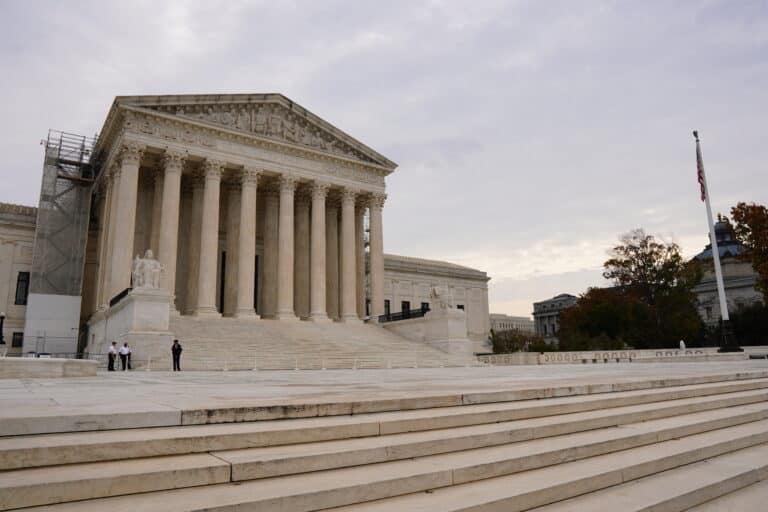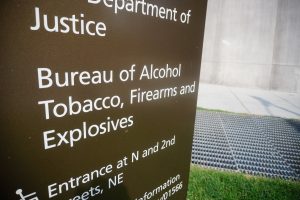The Biden Administration wants the High Court to weigh in on another gun-related case. The Court will almost certainly do so.
On Wednesday, the Department of Justice (DOJ) petitioned the Supreme Court to hear VanDerStok v. Garland. The agency’s request followed a November 2023 Fifth Circuit Court of Appeals decision that found the ATF’s ban on unfinished gun parts and kits “unlawful.” The DOJ disagreed with that outcome and requested that the nine justices reverse the Fifth Circuit.
Unlike the vast majority of cert petitions, this one stands an unusually high chance of being granted in some form or fashion for several reasons. First and foremost is who filed the request in this case.
The Supreme Court generally places greater weight on petitions filed by the federal government as a matter of practice. That’s because agencies like the DOJ typically only file cert requests with the justices when there’s an open discrepancy in the law due to lower court decisions that have created practical concerns with federal rules not being applied everywhere. When the DOJ says a legal matter desperately needs clarification, the High Court tends to listen.
The Court’s current term is a perfect example of this tendency in practice. The justices have already agreed to hear two separate gun-related cases following requests from the DOJ this session alone—US v. Rahimi and Garland v. Cargill—with several others under active consideration.
The ATF “ghost gun” ban case also has an unusual procedural history, making it a likely candidate for review.
The district court judge overseeing the case issued multiple injunctions against the ATF’s rule last year after finding that the agency had overstepped its authority in attempting to regulate unfinished gun parts and kits like functioning firearms. The Fifth Circuit affirmed those rulings. It subsequently declined to issue a stay on those rulings.
Despite those successive outcomes, the Supreme Court twice granted the DOJ’s motion for an emergency stay on any order prohibiting it from enforcing the rule. In both instances, the Court noted that it was intervening to allow the regulations to remain in effect while the appeals process played out at each level of the federal judiciary.
Not only did those twice granted emergency stays indicate that the Justices have been keeping an attentive eye on this case, but the terms of those stays also set a timer that, when paired with the Fifth Circuit’s ruling on the merits, make further Supreme Court guidance almost inevitable.
More specifically, because the stays on the orders striking down the ATF’s rule are set to expire pending the “disposition of a petition for a writ of certiorari,” that means that the Fifth Circuit’s decision against the ATF’s rule would immediately take effect if the Supreme Court rejects DOJ’s request. Such an outcome would blow a hole in the federal government’s firearms regulations. It could also risk split outcomes on the question of ATF’s authority in separate circuits currently considering similar litigation.
Those are precisely the scenarios kind the Supreme Court generally tries to avoid when possible, which just leaves the question of which form the Supreme Court’s response will take.
The Court has already agreed to hear a case dealing with the ATF’s legal authority to reverse its long-standing positions and reinterpret how to enforce federal firearms law in Cargill later this month. Cargill deals with the ATF’s attempt, at the behest of former President Donald Trump, to reclassify bump stocks as “machineguns” under federal law–effectively outlawing their possession in the process.
Since the bump stock ban is so similar to the ghost gun ban, the Court could hold DOJ’s VanDerStok petition until it issues a decision in Cargill. Depending on the outcome it ultimately reaches in that case, it could either grant, vacate, and remand the VanDerStok case back down to the lower courts to be reheard in light of its new Cargill guidance or otherwise take up VanDerStok with Cargill fresh on its mind.
Alternatively, the Court could grant DOJ’s petition independently of its other gun-related administrative law case. That’s less likely but not entirely out of the question given the Court’s posture against legal deference to administrative agencies.
In recent terms, the Court has cracked down on the ability of executive agencies like the Environmental Protection Agency and the Department of Education to reinterpret long-standing federal statutes and enact novel policies. In the current term, the Court is considering a case aimed at whether agencies should continue to enjoy broad deference in their interpretations of ambiguous statutes passed by Congress.
Taken together, these actions suggest a Court ready and willing to cast a skeptical eye toward unilateral executive lawmaking.
Whether that streak extends to the ATF’s latest positions on federal firearms law remains to be seen, of course. But no matter which way the Court is ready to rule on the questions surrounding the ATF’s authority, it will almost certainly be issuing an order on more than just bump stocks in the near future. Ghost guns will probably get the same treatment.







2 Responses
Let’s don’t use the gun prohibitionists’ propaganda terms. Rather, call them “homemade guns”.
I understand the concern about how language is used in discussing different firearms and policies. I try to be mindful of that.
Our approach is to use terms most people will recognize as much as possible but to use quotation marks to signify when a term is disputed. We will often try to fit an explanation of what the term means in more specific language as well. That’s why the second paragraph specifically talks about the ban being related to unfinished gun parts and kits.
We want the language to be accessible and familiar to readers, but we also want to explain what those terms mean in detail to avoid leaving a reader with the wrong impression about what is going on.